This article was co-authored by Zora Degrandpre, ND and by wikiHow staff writer, Eric McClure. Dr. Zora Degrandpre is a Natural Health Doctor and Licensed Naturopathic Physician in Vancouver, Washington. She is a grant reviewer for the National Institutes of Health and the National Center for Complementary and Alternative Medicine. She received her ND from the National College of Natural Medicine in 2007.
There are 17 references cited in this article, which can be found at the bottom of the page.
wikiHow marks an article as reader-approved once it receives enough positive feedback. In this case, 100% of readers who voted found the article helpful, earning it our reader-approved status.
This article has been viewed 457,268 times.
If you’re looking to take the edge off of a minor burn without heading for the medicine cabinet, you may have exactly what you need in your kitchen pantry! Due to its anti-inflammatory properties, honey is actually a fairly efficient choice when it comes to treating minor burns.[1] However, it’s important to note that this is not a miracle cure and while it’s not going to do any harm, honey is not going to dramatically speed up your healing time. However, it's a natural alternative to petroleum jelly or synthetic burn creams.
Steps
Is honey good for treating burns?
-
1Yes, but only for minor burns that don’t require medical care. If you’ve got a super minor burn and you don’t need medical help, honey may be a viable treatment option for you, However, you should only do this at home if your burn is less than 2 inches (5.1 cm) in diameter, the skin isn’t broken, and you aren’t experiencing a level of pain that’s intolerable.[2]
- Seek out medical care if the burn came from a chemical or electrical source. These burns need to be treated by a medical professional.[3]
-
2While honey can help, you should still perform basic first aid. While you can certainly use honey if you want to soothe the skin and help it heal, it shouldn’t be the first step in burn treatment. First, run the skin under cool water for 10-15 minutes. Then, dry it gently with a clean cloth.[4] You want to ensure that your skin is clean before you put anything else on it.[5]
- Immediately following a burn, the goal is to get the wound clean. Using a bunch of products before cleaning it may accidentally introduce bacteria or contaminants and make the burn worse.[6]
How do I apply the honey?
-
1Spread it over your skin gently after you’ve cleaned it. After you’ve washed the burn with cool water and dried it off, you can apply the honey. Pour 3–6 teaspoons (15–30 mL) of honey over the burned skin depending on the size of your wound. Bandage the area gently with a sterile gauze pad.[12]
- You can also just pour a dollop of honey on a gauze pad if you don’t want to apply it directly to your skin.
-
2Change your dressing twice a day to keep it clean. Due to the fact that the honey may attract bugs or go bad, it’s probably a good idea to change your dressings more frequently.[13] Remove the bandage carefully, rinse the honey off, and either reapply the dressing or let your skin air out.[14]
- There’s no problem using honey more than once if you feel like it’s bringing you relief. If your burn isn’t hurting that much and the skin is starting to heal, feel free to let it air out, though.
Expert Q&A
-
QuestionI burned myself about 2 months back, but it still itches. What can I do?
 Zora Degrandpre, NDDr. Zora Degrandpre is a Natural Health Doctor and Licensed Naturopathic Physician in Vancouver, Washington. She is a grant reviewer for the National Institutes of Health and the National Center for Complementary and Alternative Medicine. She received her ND from the National College of Natural Medicine in 2007.
Zora Degrandpre, NDDr. Zora Degrandpre is a Natural Health Doctor and Licensed Naturopathic Physician in Vancouver, Washington. She is a grant reviewer for the National Institutes of Health and the National Center for Complementary and Alternative Medicine. She received her ND from the National College of Natural Medicine in 2007.
Natural Health Doctor You don't mention what degree of burn it is-- but if it was a large second or third degree burn, go see your doctor to make sure it healed properly. You can also try to moisturize the area that was burned-- dry skin can be itchy skin and the burn injury may have caused the dryness.
You don't mention what degree of burn it is-- but if it was a large second or third degree burn, go see your doctor to make sure it healed properly. You can also try to moisturize the area that was burned-- dry skin can be itchy skin and the burn injury may have caused the dryness. -
QuestionDo these steps work with a superficial second degree burn?
 Zora Degrandpre, NDDr. Zora Degrandpre is a Natural Health Doctor and Licensed Naturopathic Physician in Vancouver, Washington. She is a grant reviewer for the National Institutes of Health and the National Center for Complementary and Alternative Medicine. She received her ND from the National College of Natural Medicine in 2007.
Zora Degrandpre, NDDr. Zora Degrandpre is a Natural Health Doctor and Licensed Naturopathic Physician in Vancouver, Washington. She is a grant reviewer for the National Institutes of Health and the National Center for Complementary and Alternative Medicine. She received her ND from the National College of Natural Medicine in 2007.
Natural Health Doctor By definition, a 2nd degree burn is MORE than superficial-- the burn goes deeper than a 1st degree burn. But, to answer your question, if the 2nd degree burn has been seen by a physician and is a small area, then yes, you can use the methods listed here to help the burn heal.
By definition, a 2nd degree burn is MORE than superficial-- the burn goes deeper than a 1st degree burn. But, to answer your question, if the 2nd degree burn has been seen by a physician and is a small area, then yes, you can use the methods listed here to help the burn heal.
Warnings
- Don’t try to remove any burnt clothing or any materials from a second- or third-degree burn. This could damage your skin further. Wait for a medical professional to remove the clothes.⧼thumbs_response⧽
- Never put butter, margarine, or any other oily substances on a burn. While they're popular folk remedies, they can do more damage to the area.[22]⧼thumbs_response⧽
- Don’t use anything but water to cool a burn. Ice is too cold and could damage your skin.⧼thumbs_response⧽
References
- ↑ https://www.ncbi.nlm.nih.gov/pmc/articles/PMC3188068/
- ↑ https://newsnetwork.mayoclinic.org/discussion/mayo-clinic-q-and-a-treating-burns/
- ↑ https://www.mayoclinic.org/diseases-conditions/burns/symptoms-causes/syc-20370539
- ↑ https://newsnetwork.mayoclinic.org/discussion/mayo-clinic-q-and-a-treating-burns/
- ↑ https://www.ncbi.nlm.nih.gov/pmc/articles/PMC428524/
- ↑ https://www.ncbi.nlm.nih.gov/pmc/articles/PMC428524/
- ↑ https://www.ncbi.nlm.nih.gov/pmc/articles/PMC3941901/
- ↑ https://www.ncbi.nlm.nih.gov/pmc/articles/PMC6613335/
- ↑ https://pubmed.ncbi.nlm.nih.gov/23758747/
- ↑ https://www.ncbi.nlm.nih.gov/pmc/articles/PMC2686636/
- ↑ https://www.ncbi.nlm.nih.gov/pmc/articles/PMC3743976/
- ↑ https://www.ncbi.nlm.nih.gov/pmc/articles/PMC3188068/
- ↑ https://www.uptodate.com/contents/topical-agents-and-dressings-for-local-burn-wound-care
- ↑ https://www.ncbi.nlm.nih.gov/pmc/articles/PMC2686636/
- ↑ https://www.ncbi.nlm.nih.gov/pmc/articles/PMC2686636/
- ↑ https://www.ncbi.nlm.nih.gov/pmc/articles/PMC3758027/
- ↑ https://www.ncbi.nlm.nih.gov/pmc/articles/PMC4158441/
- ↑ https://www.ncbi.nlm.nih.gov/pmc/articles/PMC3758027
- ↑ https://www.mayoclinic.org/drugs-supplements-honey/art-20363819
- ↑ https://www.woundsresearch.com/article/honey-biologic-wound-dressing
- ↑ https://www.researchgate.net/publication/266086987_Up-to-date_use_of_honey_for_burns_treatment
- ↑ https://www.urmc.rochester.edu/encyclopedia/content.aspx?contenttypeid=1&contentid=4543
About This Article
Honey can be a great way to naturally treat surface-level burns. Start by holding the burn under cold running water for 5 minutes. Then, cover the burn in medical grade Manuka honey and wrap it in a dry gauze bandage. Change the dressing every day, but leave the honey until it heals, since the honey provides a barrier that keeps bacteria away. If the honey has mostly rubbed off, add a little more to cover the burn. Don’t pick or remove any loose skin from the area, as this can cause scarring. If you notice any pus, discharge, swelling, or fever, visit your doctor, since the burn might be infected. For more tips from our Medical co-author, including how to recognize second and third-degree burns, read on.
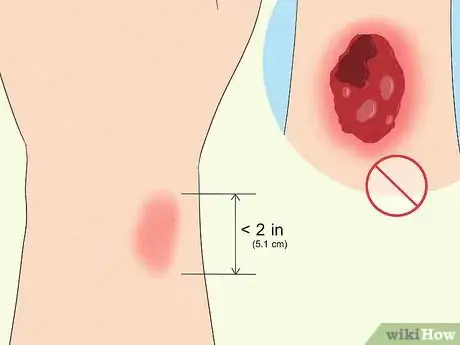




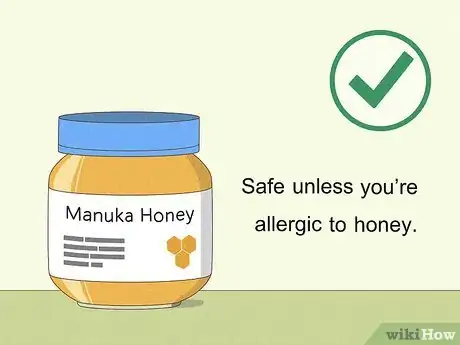
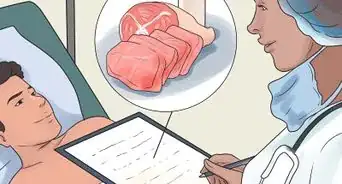
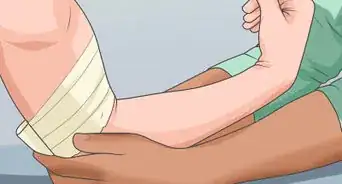

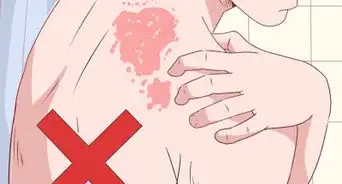





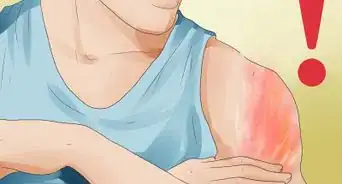

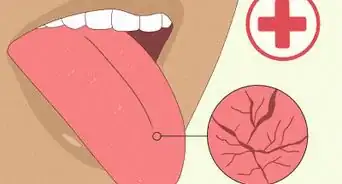












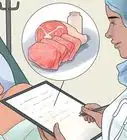






































Medical Disclaimer
The content of this article is not intended to be a substitute for professional medical advice, examination, diagnosis, or treatment. You should always contact your doctor or other qualified healthcare professional before starting, changing, or stopping any kind of health treatment.
Read More...